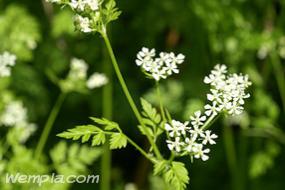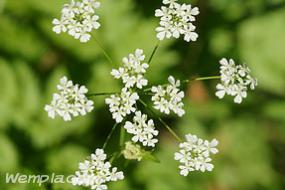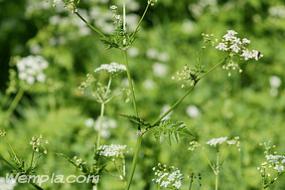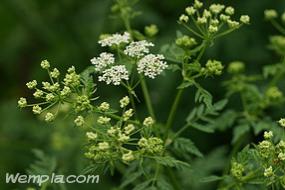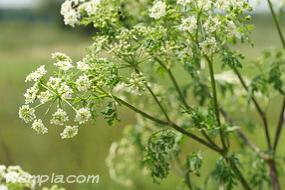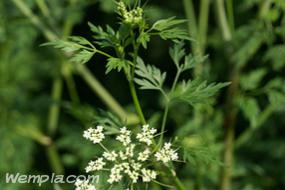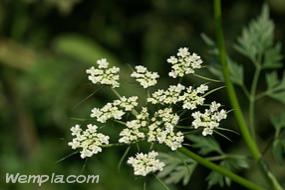Chervil
Anthriscus cerefolium
Apiaceae
Image Provider(s): netherbarium
Edible Uses
 Leaf
Leaf
Main Characteristics
He is a 40-150 cm tall perennial herb. Juicy stems are hollow, square and ridged. His leaves are bipinnately compound, similar to parsley's. The easiest way you can recognise him, is to triturate his leaves or stem between the fingers. It has an indubitable anise scent. White flowers form a loose umbrella inflorescence.
Habitats
Harvesting aid
 Leaf
Leaf
Confusion with other plants
The Chervil can only gathered, if you can identify 100% sure, because there several similar toxic species. The distinctive anise scent helps you at any time with the identification, if you have felt once, you can not miss it any more.
Anthriscus sylvestris
Caw Parsley
Apiaceae
In appearance it is very similar to the chervil. The most obvious difference is that while Chervil has a strong anise scent when triturated, Caw parsley has a weak, immature apple scent. Caw Parsley is also edible, but only recommended for experienced foragers, as identification is more difficult.
Conium maculatum
Hemlock
Apiaceae
The hemlock's stem has a pale bluish tinge, and reddish spots are situated on the thick part of the stems close to the ground. Caution, the young plants do not have these spots! Highly toxic plant, larger amounts can cause death!!!
Description
- Garden chervil
- French parsley
Flower

Stem
Leaf

Fruit




